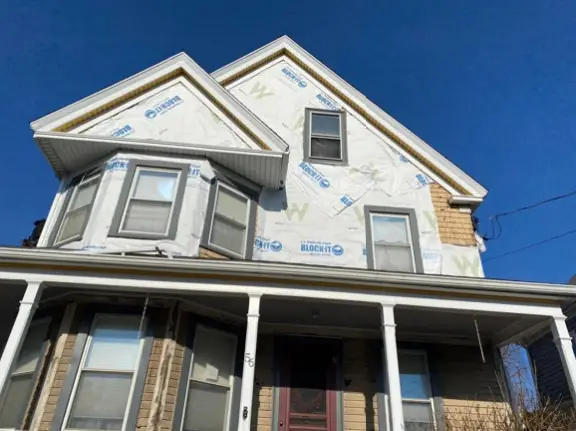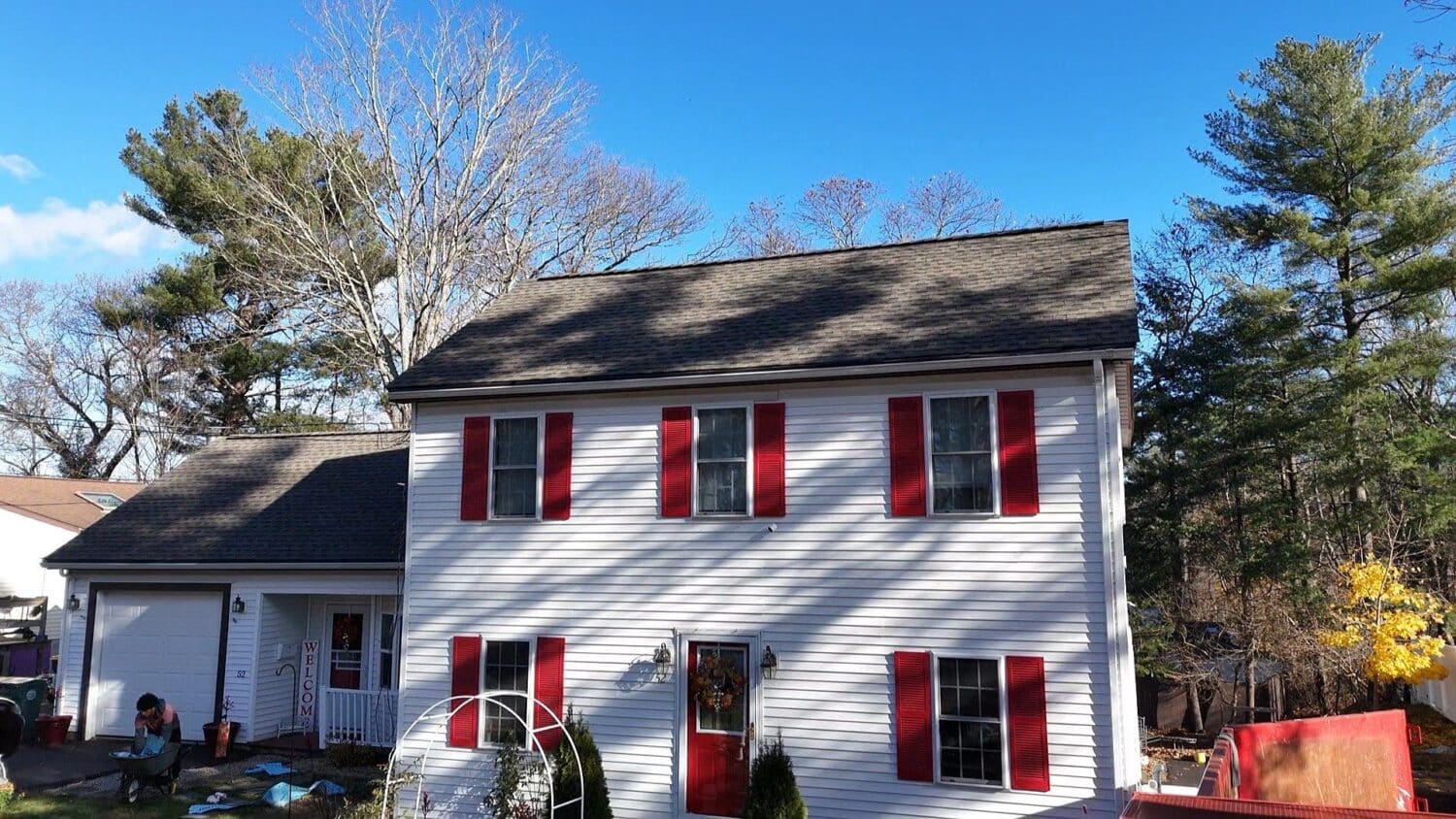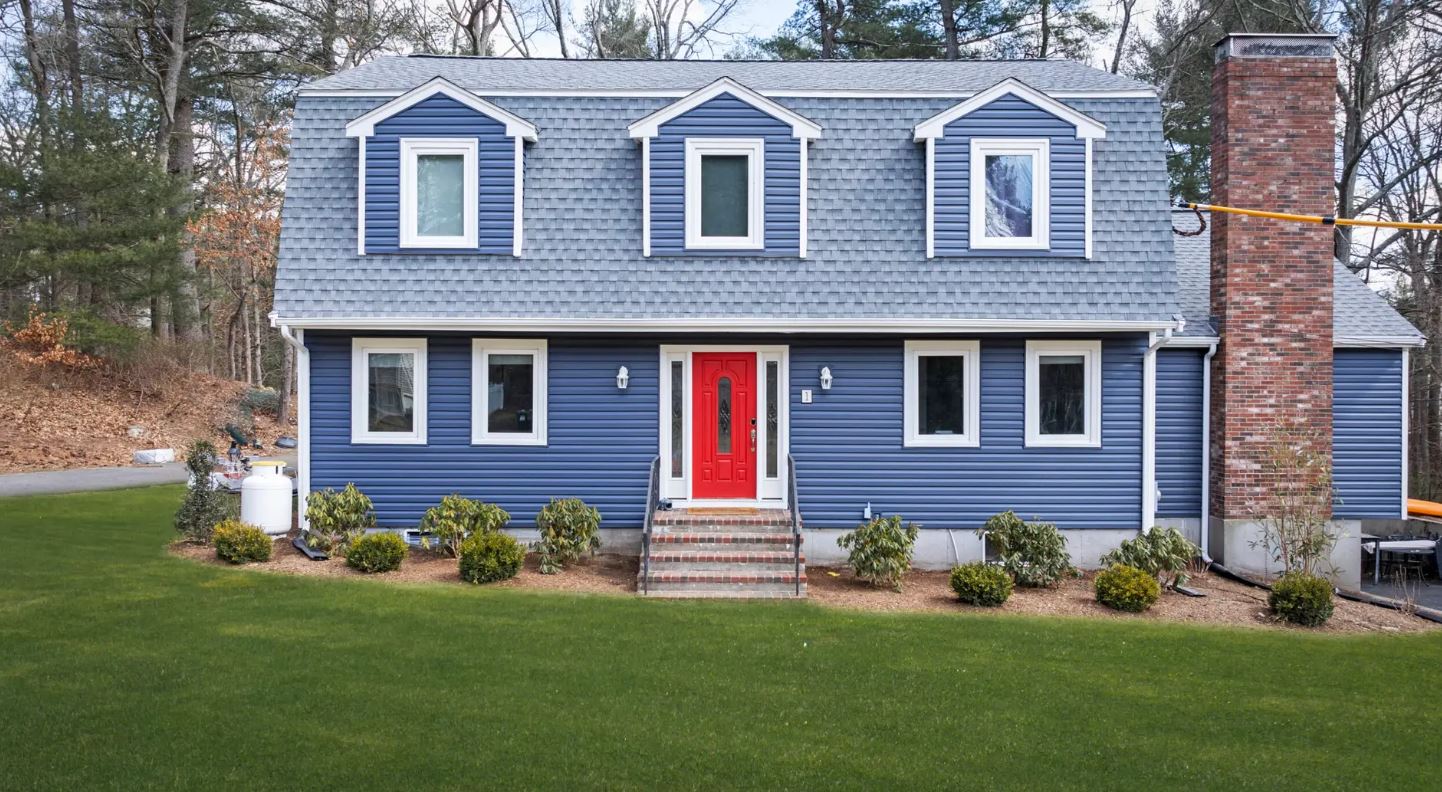Did you know that indoor air pollutants can be up to 5 times higher than typical outdoor concentrations? When winter settles in New England, we all close up our windows for months at a time.
Table of Contents
With sealed-up homes trapping pollutants, allergens, and excess moisture, poor indoor air quality can quickly become a problem. You can imagine what this can do to your home’s indoor air quality in New England!
Some homeowners may experience respiratory issues, mold growth, and an uncomfortable home all season long. How can homeowners make healthier homes when battling winter air quality in New England?
Let’s explore five smart ways to improve the air quality in New England homes this winter.
Improve Winter Air Quality in New England with Energy-Efficient Windows
Windows let in sunlight, but they also influence airflow, moisture control, and overall air quality. If your windows are outdated or poorly sealed, you might be dealing with excess condensation, cold drafts, and stale indoor air. The good news? The best replacement windows for New England solve these problems by balancing insulation with controlled ventilation–all while reducing the risk of mold in your home!
Why Ventilation Matters for Winter Air Quality and Mold Prevention
Without proper ventilation, indoor air becomes stagnant. This air traps pollutants like dust, pet dander, and volatile organic compounds (VOCs) from household products. Well-designed windows incorporate advanced features to maintain fresh airflow while keeping heat loss to a minimum. For example, your windows should be roughly 6.5 feet above floor level to help maximize ventilation.
What Window Technologies Improve Indoor Air Quality?
✔ Double and triple-pane glass – These layers prevent condensation, which reduces the risk of mold growth on window frames and sills.
✔ Low-E coatings – A thin metallic layer that minimizes UV penetration while maintaining heat balance indoors.
✔ Vent latches and trickle vents – Designed for controlled airflow without major heat loss, ensuring fresh air circulates even when windows are closed.
✔ Argon or krypton gas fills – These dense gases between glass panes provide superior insulation while limiting condensation buildup.
The Best Window Styles for Ventilation
When the weather is warm enough to open your windows, these are the top styles for maximizing indoor airflow:
✔ Double Hung Windows – Feature two operable sashes that allow air to flow in from both the top and bottom, improving ventilation control and reducing indoor air stagnation.
✔ Slider Windows – Open horizontally, making them ideal for wide openings where maximizing cross-ventilation is essential. Their simple design allows for smooth airflow without obstruction.
✔ Casement Windows – Hinged on the side and opening outward, these windows catch passing breezes and direct fresh air into the home, making them one of the most effective styles for ventilation.
Choose Quality Siding Materials to Prevent Mold and Mildew Growth
Did you know that siding can impact moisture regulation and air quality inside your home? That’s because outdated siding can trap humidity, leading to hidden mold that releases airborne spores into your living space. The best siding for New England is engineered to combat moisture buildup while maintaining durability against harsh weather.
How Siding Affects Indoor Air Quality
Poor siding installation or failing materials can create gaps where water seeps in, causing structural rot and mold issues. Even minor leaks behind the siding can lead to indoor humidity problems, triggering respiratory symptoms and musty odors.
Top Siding Choices for New England Homes

✔ Fiber cement siding – This non-porous material resists moisture, pests, and rot, keeping your walls dry and mold-free.
✔ Insulated vinyl siding – Features a built-in foam backing that prevents heat loss while improving breathability.
✔ Weather-resistant barriers – Underlayment behind siding allows moisture to escape, reducing trapped humidity that could affect indoor air.
Installing the right siding ensures your home stays dry and breathable, preventing air quality issues caused by hidden mold and mildew growth.
Maintain Your Roof to Prevent Leaks and Humidity Issues
Does your roof matter when it comes to air quality in New England? Yes! If it’s damaged or poorly ventilated, it can trap moisture. This moisture leads to mold growth, increased humidity, and even structural issues.
A well-maintained New England roofing system keeps indoor air fresh while protecting against leaks that compromise air quality.
How Roofing Influences Indoor Humidity
✔ Leaks lead to moisture buildup – Water intrusion through damaged shingles or flashing creates the perfect environment for mold and mildew.
✔ Poor attic ventilation traps heat – Without adequate airflow, warm air gets trapped, raising humidity levels and increasing the risk of condensation.
✔ Clogged gutters cause water infiltration – Overflowing gutters allow moisture to seep into walls and ceilings, spreading damp air inside.
Best Roofing Features for Air Quality

✔ GAF roofing systems with ridge vents – These allow for continuous airflow through the attic, preventing heat and moisture accumulation. At the very least, you’ll need an intake and outtake vent to make sure indoor air is properly circulating.
✔ Synthetic underlayment – Provides superior waterproofing under shingles, reducing the chances of mold-related air quality issues.
✔ Cool roof technology – Reflective shingles reduce heat absorption, keeping attic temperatures balanced to avoid excess moisture buildup.

A New England roofing system designed with proper ventilation and insulation ensures your indoor air stays clean and dry throughout the winter.
Monitor Air Quality and Adjust Ventilation Strategies
Are you wondering about the air quality in your own New England home? It starts with checking the air quality map in New England to track pollutants and outdoor allergens. Winter typically brings higher indoor pollution levels due to sealed-off ventilation, so strategic air circulation adjustments can make a noticeable difference.
Common Indoor Air Pollutants in Winter
✔ Carbon monoxide (CO) – Can build up from fireplaces, furnaces, and gas appliances if ventilation is poor.
✔ Radon gas – A naturally occurring, odorless gas that can enter homes through foundation cracks, posing long-term health risks.
✔ Airborne allergens – Dust mites, pet dander, and mold spores increase when fresh air circulation is limited.
Ways to Improve Airflow Indoors
✔ Use energy recovery ventilators (ERVs) – These exchange stale indoor air with fresh outdoor air without significant heat loss.
✔ Install whole-home dehumidifiers – Keeps humidity between 30-50% to prevent mold and respiratory issues.
✔ Replace HVAC filters regularly – A high-efficiency particulate air (HEPA) filter captures airborne pollutants, improving indoor air quality.
Checking an air quality map New England helps homeowners make informed decisions about when to air out their homes or rely on mechanical ventilation.
How Weather Patterns Affect Winter Air Quality

New England winters are unpredictable—one week brings a Snowmageddon, the next feels unseasonably mild. Weather patterns like What does La Niña mean for New England can significantly impact air quality indoors.
This year’s Farmers’ Almanac winter 2024 New England forecast predicts fluctuating temperatures, which can lead to increased humidity levels inside homes.
Can La Niña Affect Indoor Air Quality? Possibly!
✔ Colder-than-normal temperatures – Homes stay sealed longer, increasing indoor pollutant buildup.
✔ Higher humidity levels in coastal areas – Leads to condensation and mold issues without proper ventilation.
✔ Drier air in inland regions – Can cause respiratory irritation and static electricity problems.
Quick Fixes for Weather-Related Air Quality Issues
✔ Use a hygrometer – Tracks indoor humidity to prevent excess moisture or dry air discomfort.
✔ Ventilate on milder days – Opening windows for short periods helps refresh indoor air.
✔ Use humidifiers and dehumidifiers strategically – Balance moisture levels to prevent air quality fluctuations.
Free Estimate for Windows, Siding, and Roofing from Coastal Windows & Exteriors
From the best replacement windows for New England to the best siding for New England, every upgrade plays a role in maintaining fresh, breathable air inside your home. With the right New England roofing, siding, and ventilation strategies, you can combat winter air quality issues before they start!
Our team at Coastal Windows & Exteriors specializes in air-improving home upgrades that boost comfort, efficiency, and indoor health. Call us today to find the perfect solution for your home and breathe easier all season long!



